An Anti-Fatigue System (AFS) is an onboard system installed on vehicles to detect signs of driver fatigue while driving. In the automotive industry, Anti-Fatigue Systems are a form of driver-assistance features which are broadly categorized as Vehicle Safety Technology, a classification which also includes Advanced Driver Assistance Systems (ADAS).
On Singapore buses, AFS systems are installed on the dashboard of the bus, comprising a camera unit and an infrared illuminator. Tactile feedback is delivered to the driver via a vibration motor attached to the driver’s seat when loss of concentration is detected. The illuminator may be integrated with or separate from the camera unit, depending on the manufacturer.
The Land Transport Authority (LTA) is responsible for bus procurement and their specifications since the start of the Bus Contracting Model (BCM). The LTA made AFS systems a requirement for buses procured starting from late-2017.
History
When the MAN Lion’s City DD Mock-up Bus (SG5999Z) was first exhibited to the public, it bore an anti-fatigue system supplied by Guardian Seeing Machines. A similar AFS is also featured on the MAN Lion’s City SD Concept Bus (SG4002G). After the LTA made AFS mandatory for new buses, more system providers would emerge on the scene.
AFS Systems in use
Seeing Machines Guardian
| Model | Guardian |
| Functionality | Fatigue detection and alert system with incident reporting capability |
| Buses | SG5999Z, SG4002G, MAN A22 (Euro 6), MAN A95 (Euro 6) |
The Guardian Anti-Fatigue System, supplied by Australian company Seeing Machines, is an intelligent driver safety system that uses in-cab sensors to monitor in real time the driver’s levels of fatigue and distraction. Face- and gaze-tracking algorithms measure the driver’s head position and eye closure and, when safety parameters are exceeded, audio alarms and seat vibration are immediately activated.
The system comes in the form of a small dash-mounted camera. Small infrared illuminator units mounted on the dashboard (near the camera unit) emit infrared light, enabling the system to work in the dark and even when the driver is wearing sunglasses. The system is also capable of sending fatigue incident reports to the Operations Control Centre.
TNT Surveillance Driver Alert (T-DA)
(Formerly known as TNT Surveillance SE-9, and also known as the TNT Surveillance Golden Eye)
| Model | Driver Alert Camera (T-DA) |
| Functionality | Fatigue detection and alert system |
| Buses | MAN A95, Volvo B5LH, MAN A22 (SMRT, for Trial), Buses under the Bukit Merah Bus Package, Yutong E12, Yutong E12DD, 3-Door MAN A95 (Euro 6), Linkker LM312, Alexander Dennis Enviro500 (3 Door) |
The TNT Surveillance Driver Alert (T-DA) (or Golden Eye Anti-Fatigue System) is supplied by local company TNT Surveillance, and is a driver auxiliary warning system that uses machine and facial vision technology to detect driver fatigue or abnormal behaviour. Visual and audio alerts are issued via the Golden Eye Display (also called T-watch) located on the dashboard. Abnormal conditions detected by the Golden Eye Monitor (formerly called SE-9) include fatigue, distraction, smoking, and making phone calls. A vibration will also be triggered by the system through a seat pad.
The system comes in the form of a small dash-mounted unit containing a camera and infrared illuminator units on the side. The infrared illumination enables the system to work in the dark and even when the driver is wearing sunglasses. The unit is mounted on the right dashboard (near the Golden Eye display unit). It is not yet known if the system is able to send fatigue incident reports to the Operations Control Centre.
As part of the Bukit Merah Bus Package (Tendered Contract), SBS Transit will be installing the Golden Eye anti fatigue system on all of the buses under the Package.
The TNT Driver Alert Camera (T-DA) belongs to the TNT Surveillance T-Guard Driver Management System. Other tools offered as part of T-Guard include Front and Side Alert Cameras (T-FA, T-SA), telematics system (T-SEEDS) and a fleet management dashboard.
See Also:
External Links & References:
Back to Buses
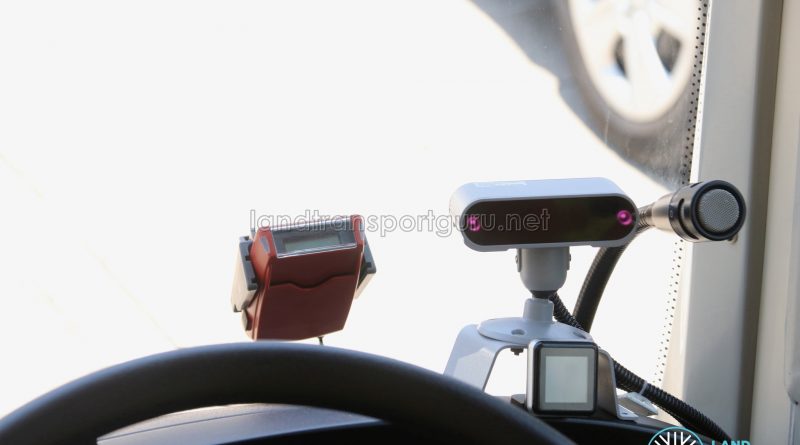
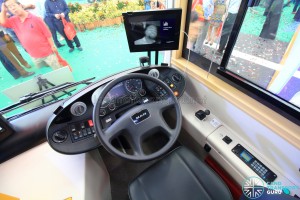
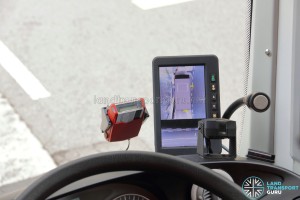

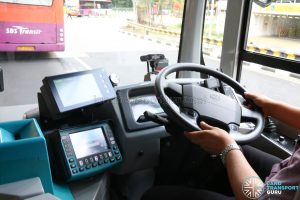
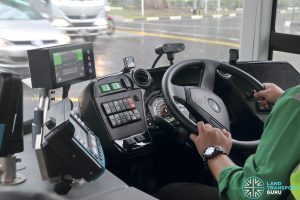
Can you specify amount for Fatigue Cameras?